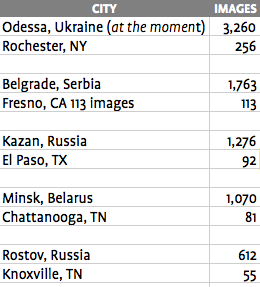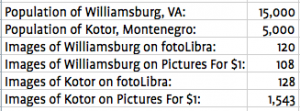Archive for March, 2014
The BAPLA Quiz
March 20th, 2014by Gwyn Headley
Managing Director
Tags: ach-y-fi, ambrosia, Arcadia, bacchanalia, BAPLA Quiz, Beverley Ballard, British Library, Camera Press, Charlotte Lippmann, Damien Gaillard, fotoLibra, Four Corners Images, goddesses, gods, Gwyn Headley, hoi polloi, ivory towers, Martyn Goddard, Mary Evans, National Portrait Gallery, nectar, nymphs, Offside Sports Images, picture library, satyrs, Steve Lake, stock agency, Superstock, sylvan glades, The Bridgman Art Library, Yvonne Seeley
Life working in a picture library isn’t just wine and roses, you know. There’s only so much disporting ourselves in sylvan glades we can get through in a day, and there can be such a thing as a surfeit of ambrosia and an excess of nectar. From time to time we are forced to descend from our ivory citadels and face the gritty reality of everyday life, away from our cloistered, chauffeured and charmed lives, and deal with Ordinary People, who have to get by on Wine. And Beer. Occasionally we even have to confront what we believe is called Hard Work.
Such a day came yesterday evening, in the guise of the BAPLA (British Association of Picture Libraries & Agencies) Quiz. Goodness, we had to work! It was so-o-o Hard! A nasty man kept asking us difficult questions — a proper interrogation it was — and he ignored me when I plaintively demanded more nectar and ambrosia, making me drink Beer and Wine instead, and asking me more hard questions. I won’t be doing that again in a hurry.
From a human PoV this event was much like a pub quiz, except the participants were all picture libraries and picture researchers; the nymphs, satyrs, gods and goddesses of the image world. We congregated at the Yorkshire Grey in Theobalds Road, hard by Gray’s Inn in the centre of London, on Earth.
All the teams had exotic names, coincidentally mirroring the names we use back home in Arcadia.
Graham, Llinos and Jacqui couldn’t be coaxed from their dreaming spires, so the fotoLibra team consisted of:
- Charlotte Lippmann, Picture Researcher
- Beverley Ballard, Picture Researcher
- Martyn Goddard, Photographer
- Damien Gaillard, fL Technical Development Manager
- Yvonne Seeley, fL Marketing Director, and
- Gwyn Headley (that’s me), fl MD.
Each team had to have a minimum of two picture researchers, and so we are very grateful to Beverley and Charlotte for putting up with us.
The questions were compiled and enforced by Steve Lake of 4 Corners Images, and he was merciless. No, implacable. No, unrelenting. Yes, all three, and more.
For example, we were shown Photos of Celebs When Young. We got 3 out of 20 right. Who on earth knew that José Mourinho used to have horns?
Then followed questions of every sort, such as “What does the term Lyonnaise mean when applied to French cooking?”
We had a secret weapon here. Damien, our TDM, is from Lyons, and his brother is a top chef in Paris. So “Potatoes,” I said decisively. “Cream,” said Bev. Nothing, said Damien. We left it blank.
The answer was Onions. “Onions? Everything in France has onions!” complained Martyn.
Finally the results came in. There were tears. There was laughter. There was gross injustice. To show how remorseless Question Master Steve was, he slashed 20 points from the British Library for writing ‘Euston Square’ instead of ‘Euston Road’ .
fotoLibra only came fourth, despite our clear superiority. We would have won by a large margin if the other teams hadn’t known more than us. Not fair.
The official results (subject to scrutineering) were
- The Bridgman Art Library
- Mary Evans
- Offside Sports Images
- fotoLibra
- Camera Press
- National Portrait Gallery
- British Library
- Superstock
So here we are this morning, back in our ivory tower, re-insulated from the οἱ ολλοί, gazing out at the world (ach-y-fi! nasty, dirty place!) and I’m contemplating a quiet bacchanalia or two to restore my flagging spirits.
Ah! Here comes Pan! I’ll have to go — gotta dance, gotta sing. See you later!
This is posted in an effort to placate Owen Elias, who wrote about my last blog “Another moaning tirade. Do you never have anything positive to say?”
The Russians Are Coming!
March 12th, 2014by Gwyn Headley
Managing Director
Tags: $1, 25 million, Belgrade, Chattanooga, dollar, El Paso, fotoLibra, Fresno, images, Kazan, Knoxville, Kotor, Minsk, Montenegro, Odessa, picture library, pictures for a dollar, Rochester, Rostov, Russians, stock agency, Williamsburg
25 million images for a dollar each!
Yet another ‘stock agency’ has bulk-emailed the world (why should spam trouble them?) to tell us we can buy images from them for a dollar each.
Of course you can’t actually buy a picture from them for a dollar, despite what they promise. You have to start by paying a minimum of ten dollars, at which point they’ll throw in nine extra pictures (which you may or may not want) for free.
The pound, the euro, the yen and the rouble don’t concern them; they only want your dollars.
The business model is to blind buyers with price and quantity, and gloss over content and quality. Pile ’em high, sell ’em cheap. It’s a well-used model.
But talking of content and quality, the balance of image subjects seems wrong for a website which appears to be US-based and aimed primarily at American buyers. Compare these eastern and western cities, all with populations around the million mark. Here are the number of images Pictures For A Dollar (not its real name, natch) has of each location:
As for my headline, I have no idea if this site has anything to do with our Russian friends. But there does seem to be a definite Eastern flavour to the content. As the table above demonstrates, there are ten times as many images of former Soviet bloc cities than of American cities. Which is very useful if you are publishing to the Eastern European market.
Check out these two tourist destinations:
Where did this Pictures For A Dollar site acquire its images, do you think? From all the figures quoted, it certainly looks more Eastern than Western.
I assume they own all these images, so they don’t have to pay the photographers. Therefore all the business costs are pumped into marketing the static stock. There is no indication that there will be new additions to the 25 million images they hold — the website baldly states “Pictures For A Dollar is not accepting contributors at this time.”
Why does this upset me? Because this has nothing to do with photography. Photographers are not welcome on this site.
This is a commodity sale, which will directly affect the livelihood of yet more photographers. I very much doubt that the photographers who supplied the majority of images which ended up on Pictures For A Dollar are going to see a cent for their work. And I don’t think that’s fair.
What worries me is how can a picture library (British usage) or stock agency (American usage) like fotoLibra compete?
I hope it will be by providing well-keyworded, precise, high-quality, up-to-date AND historical images that people actually want and need, not a dubious flytip of cheaply acquired bulk collections that might pass at a pinch.
Or do you have other ideas?



